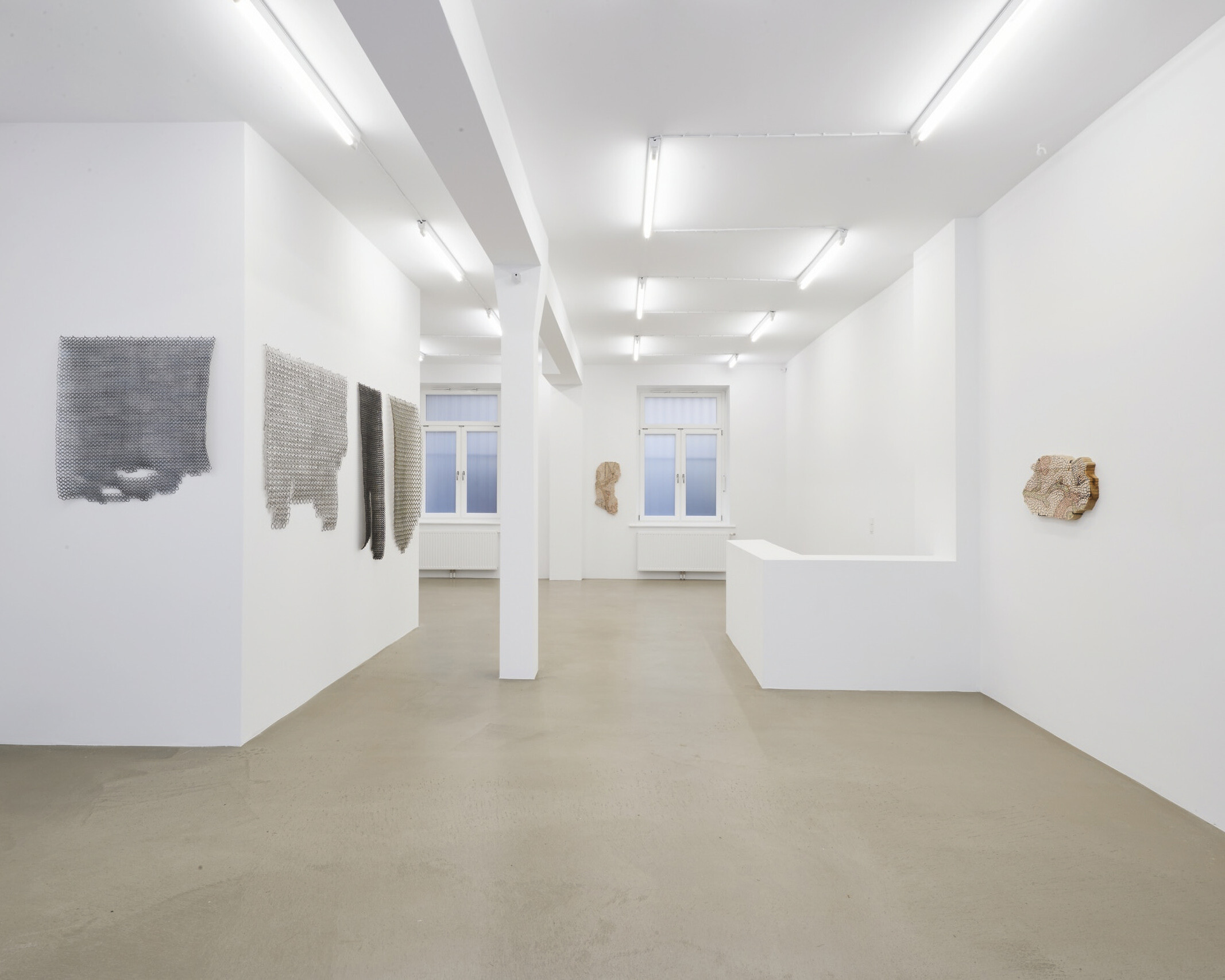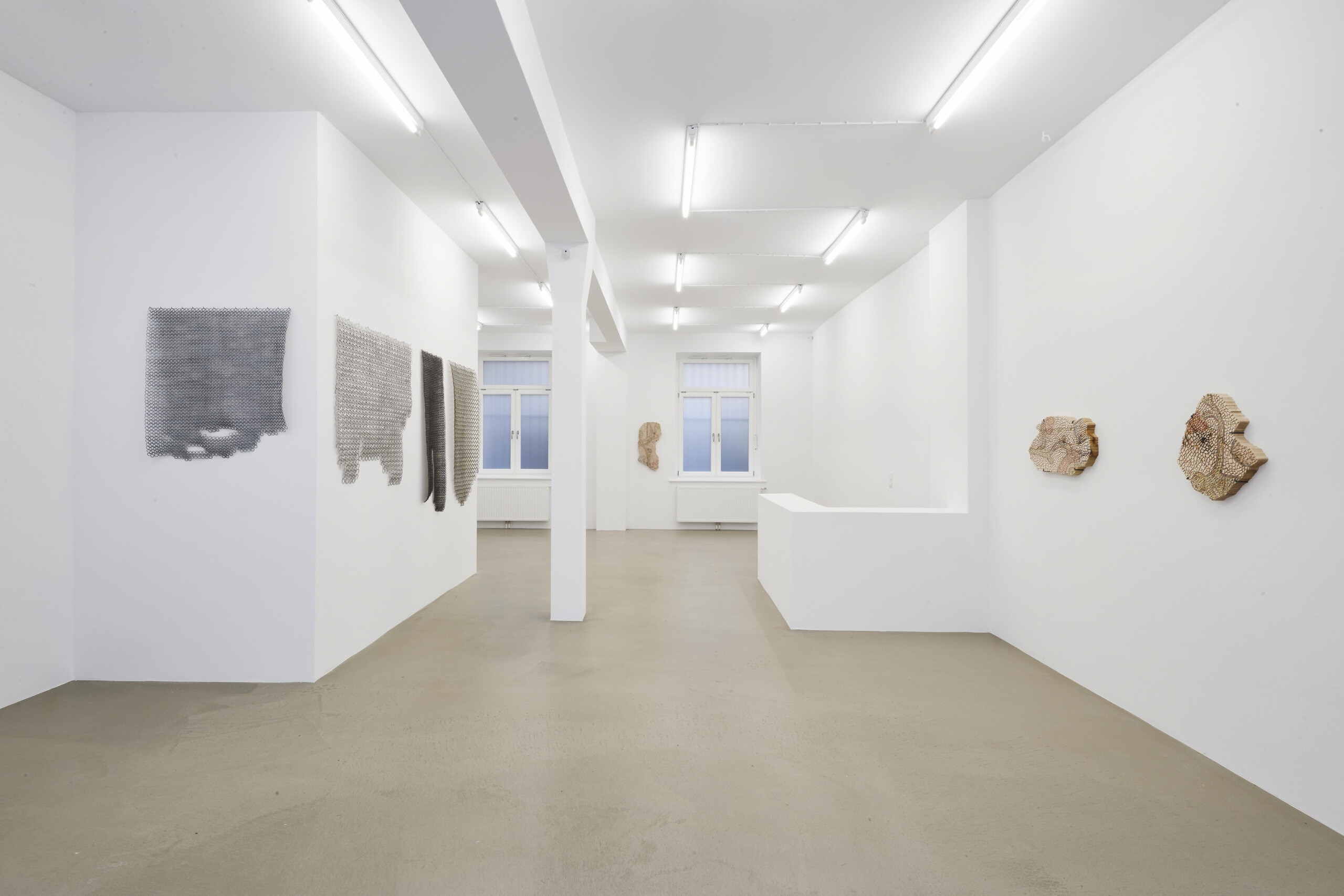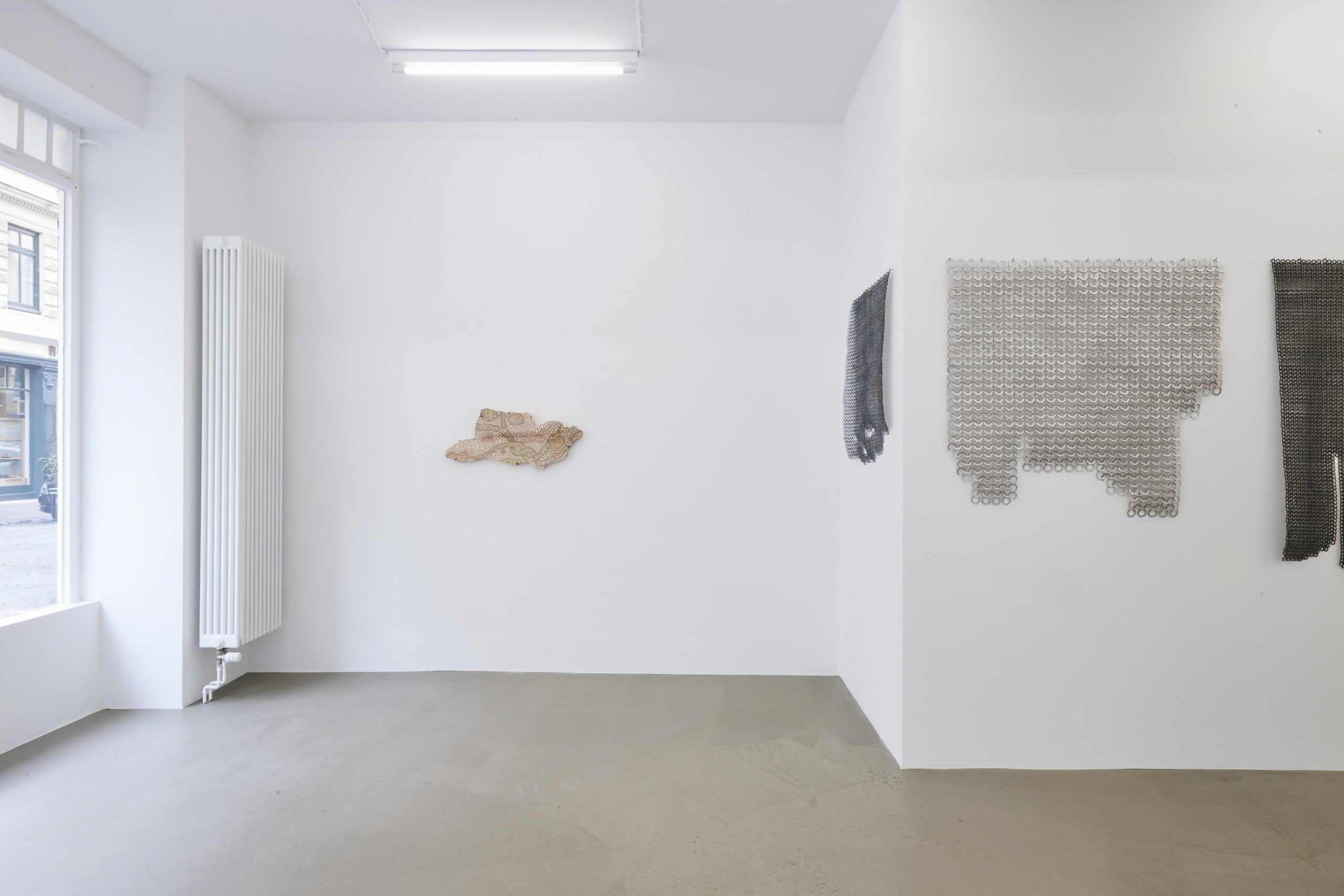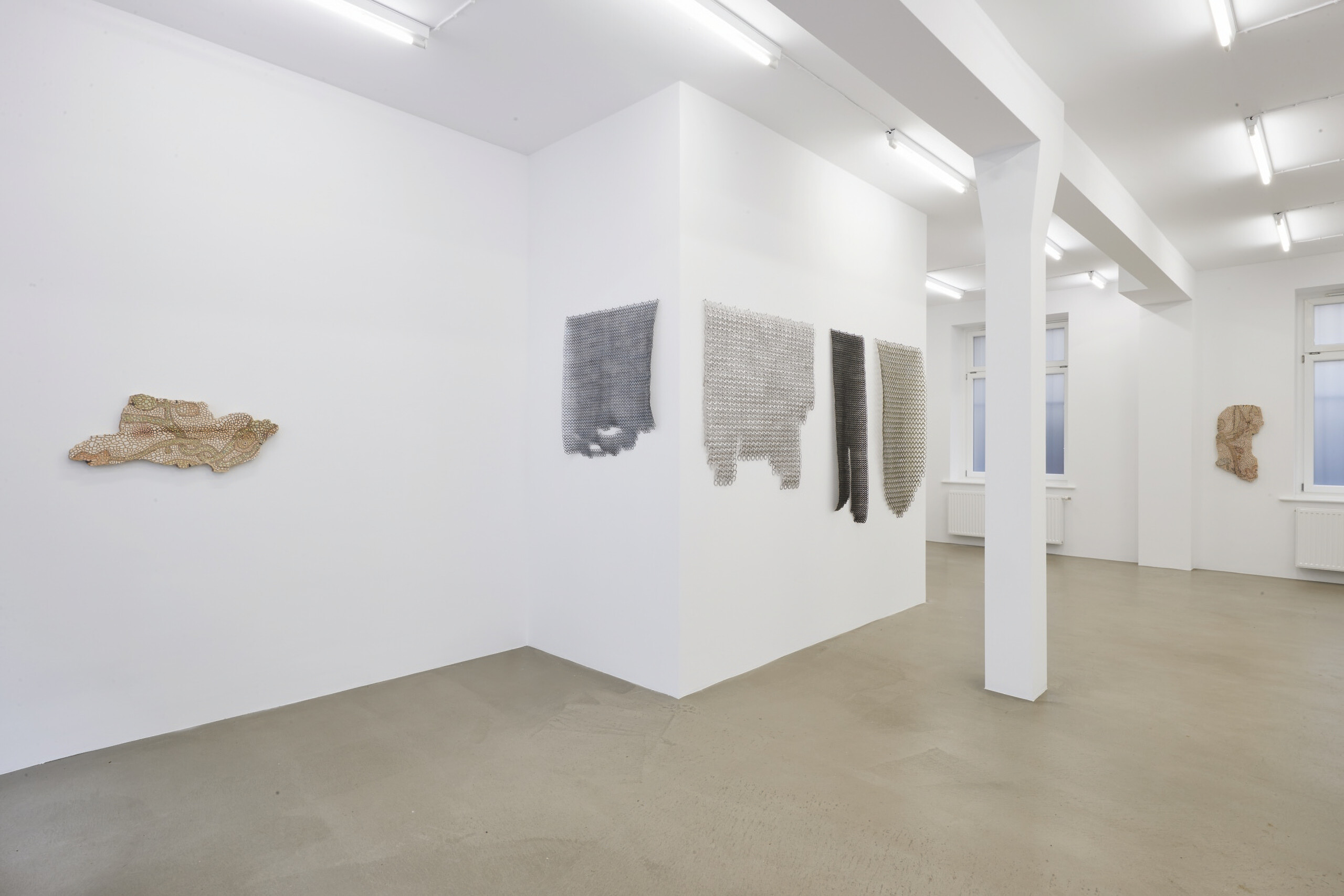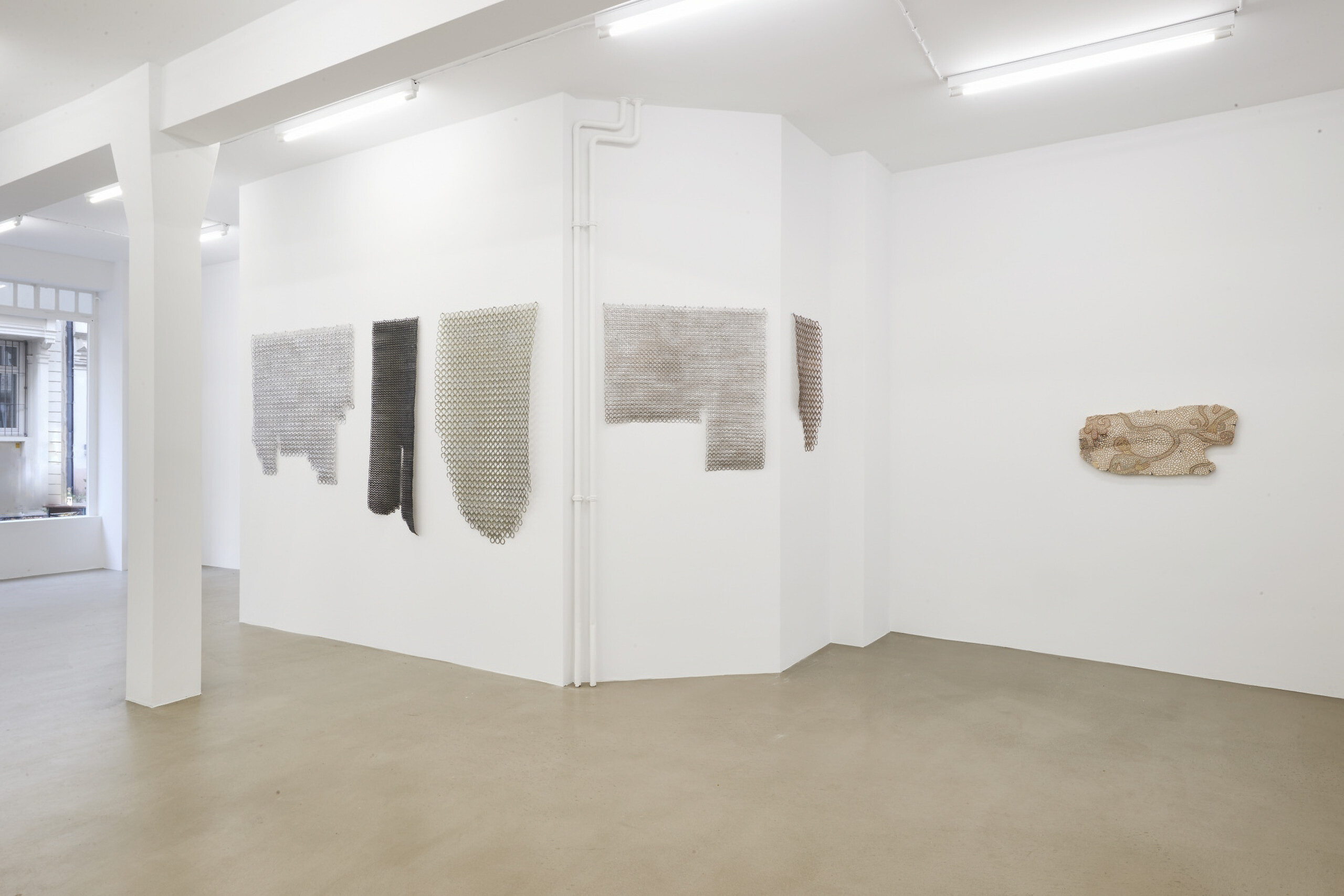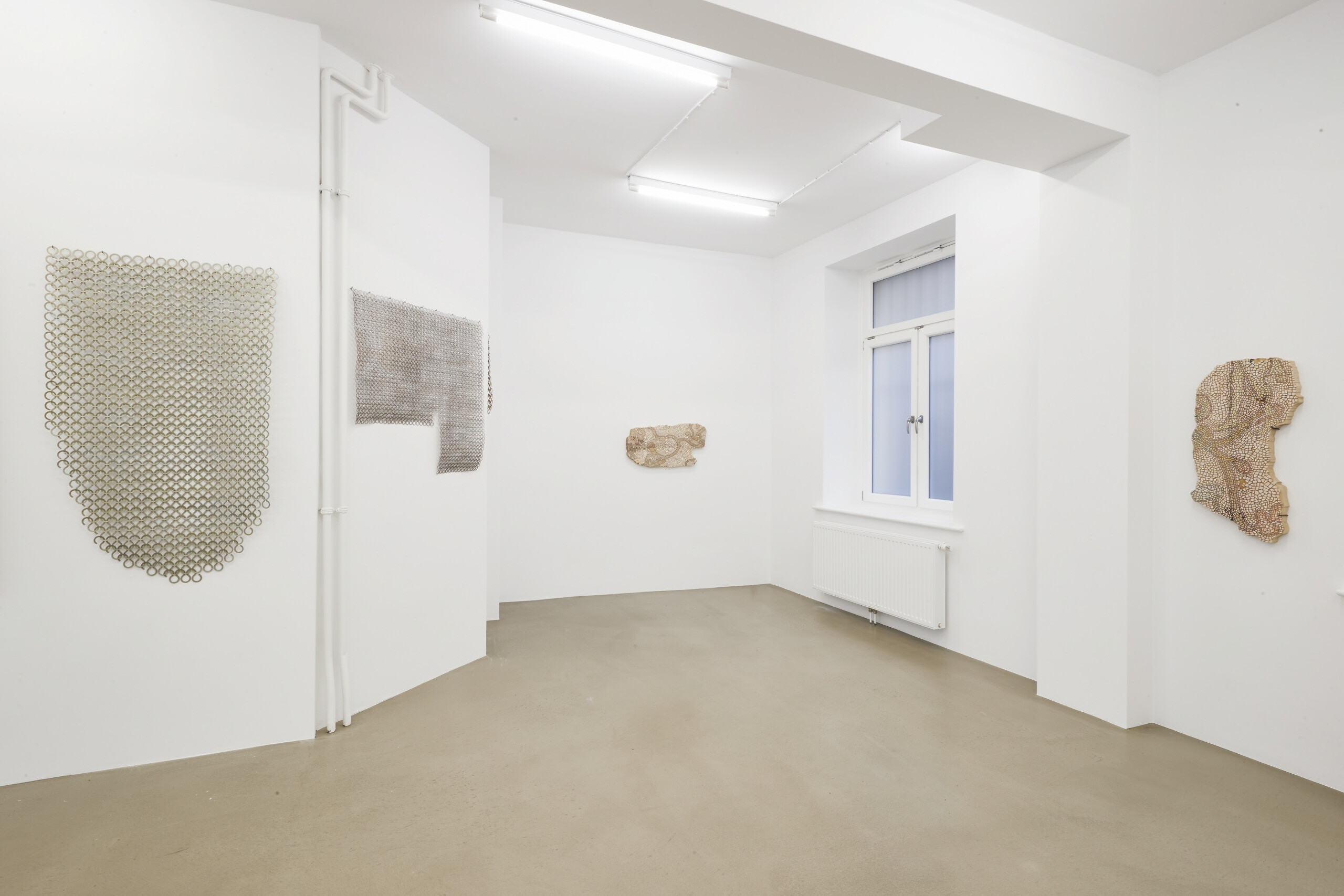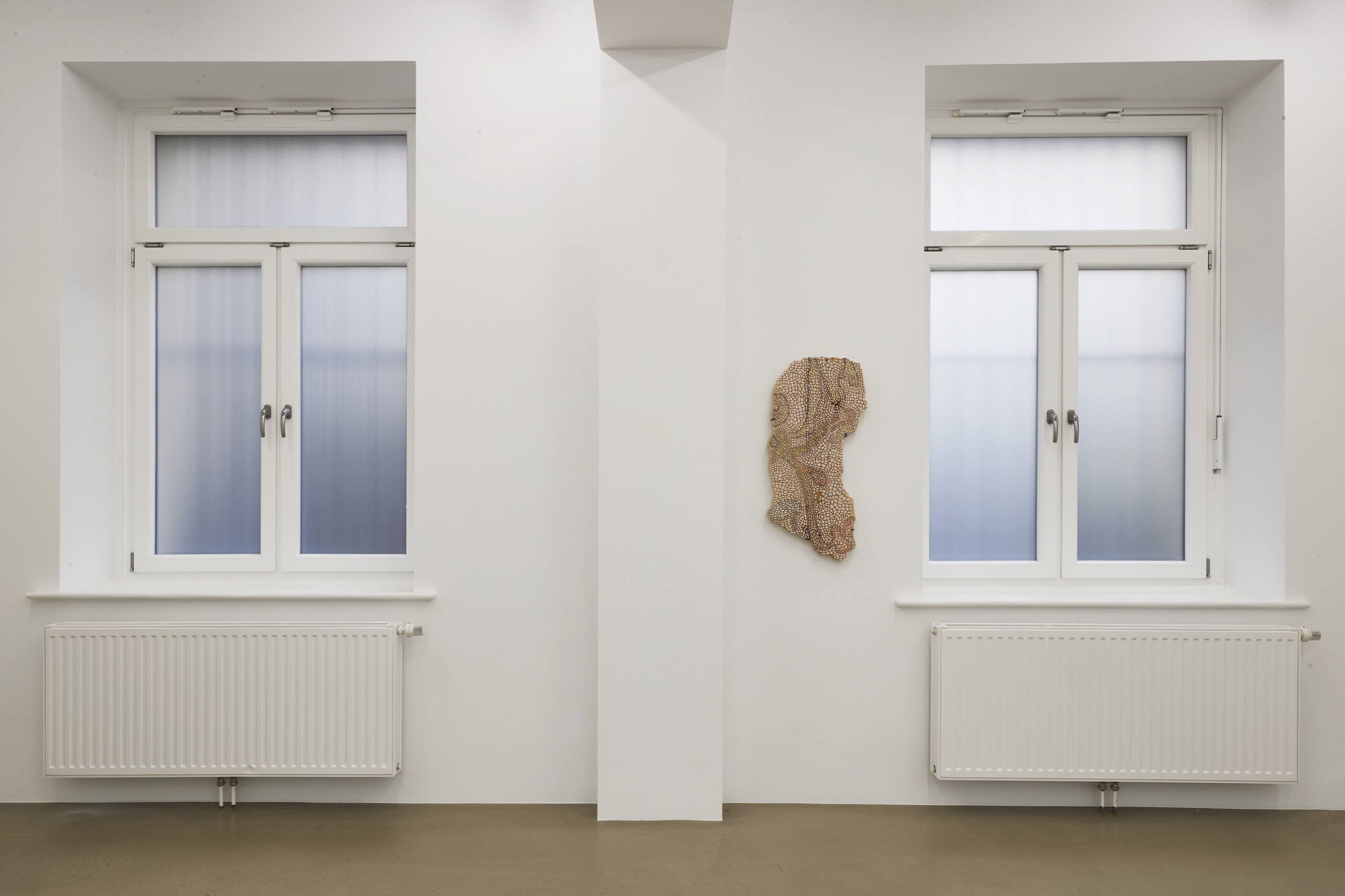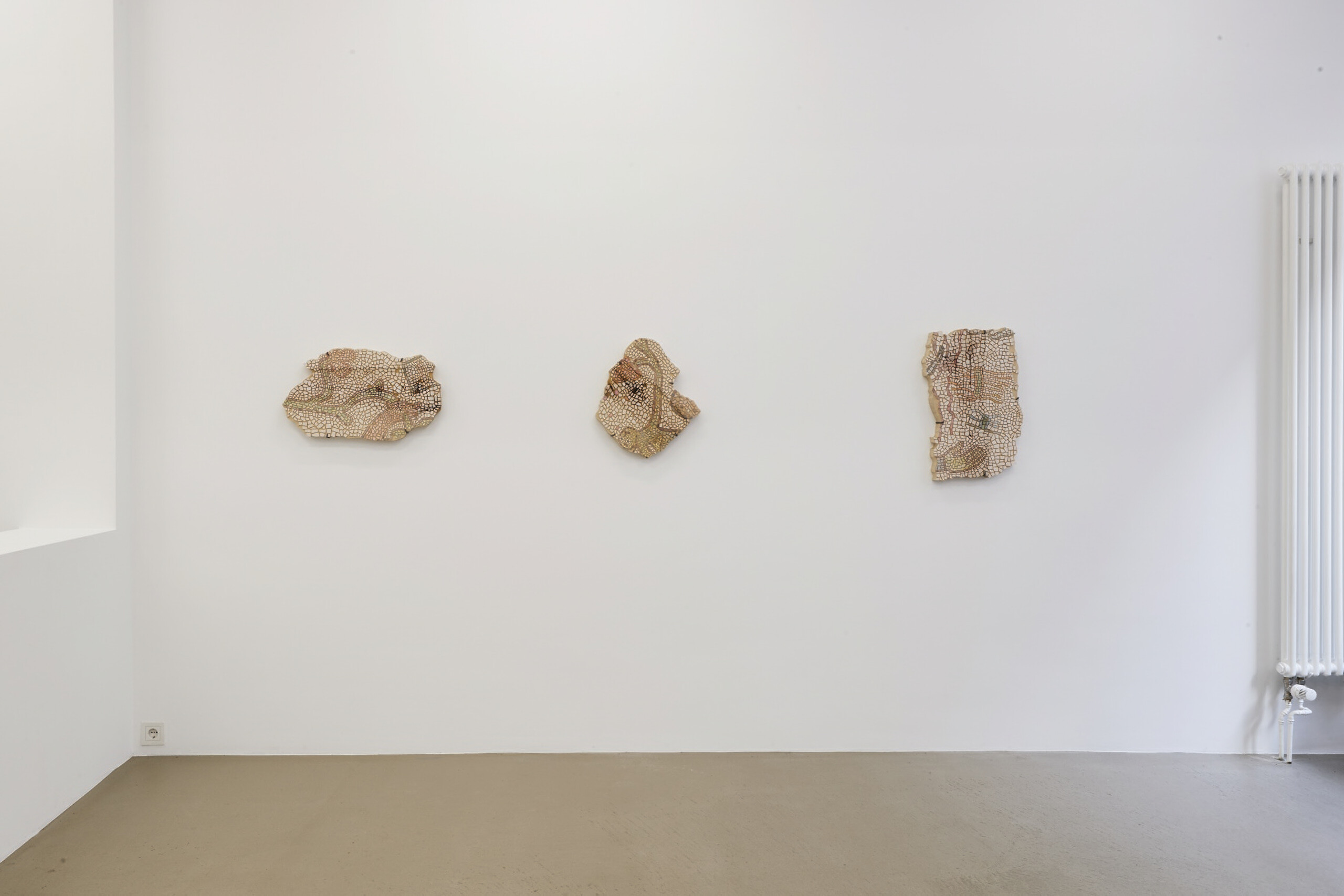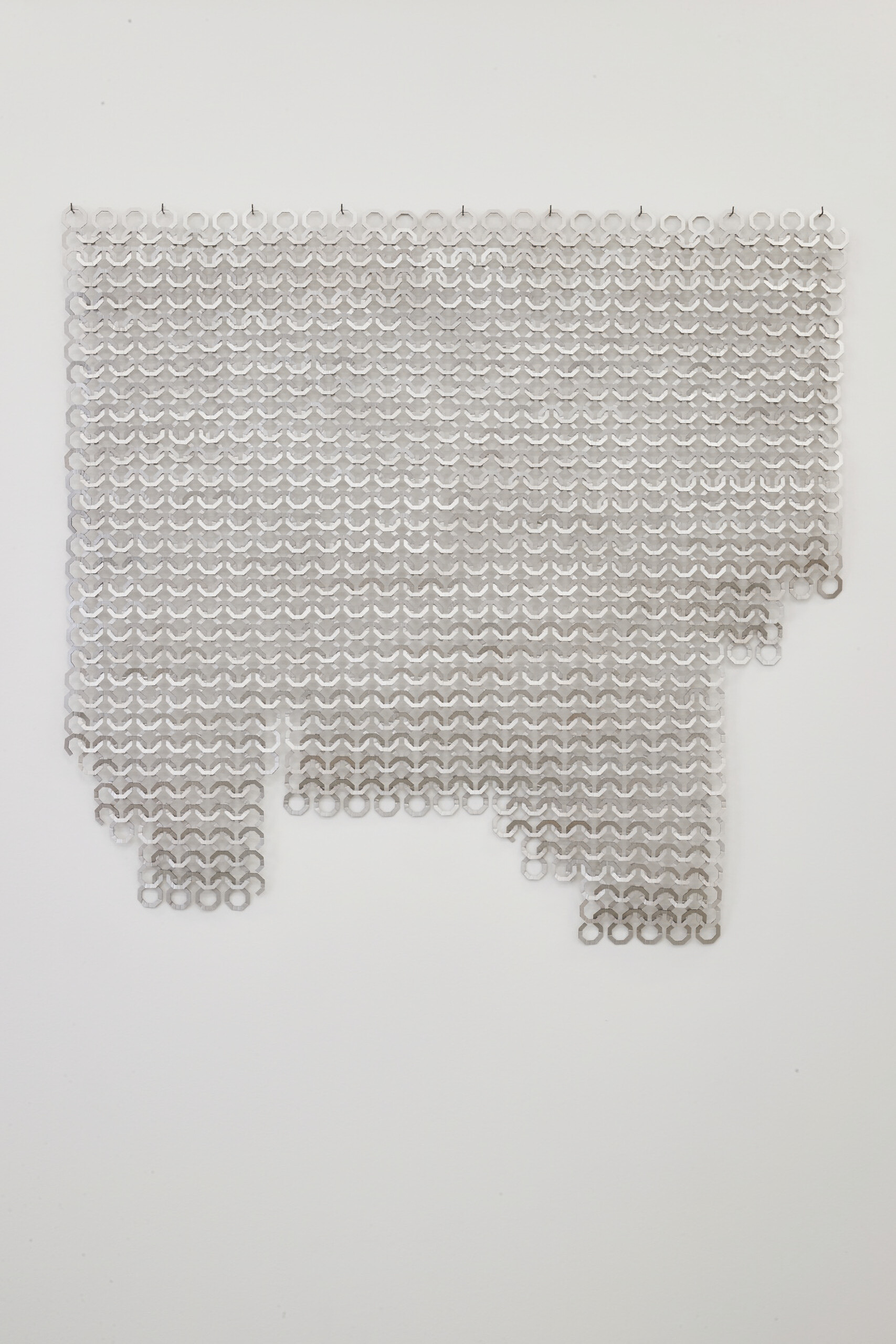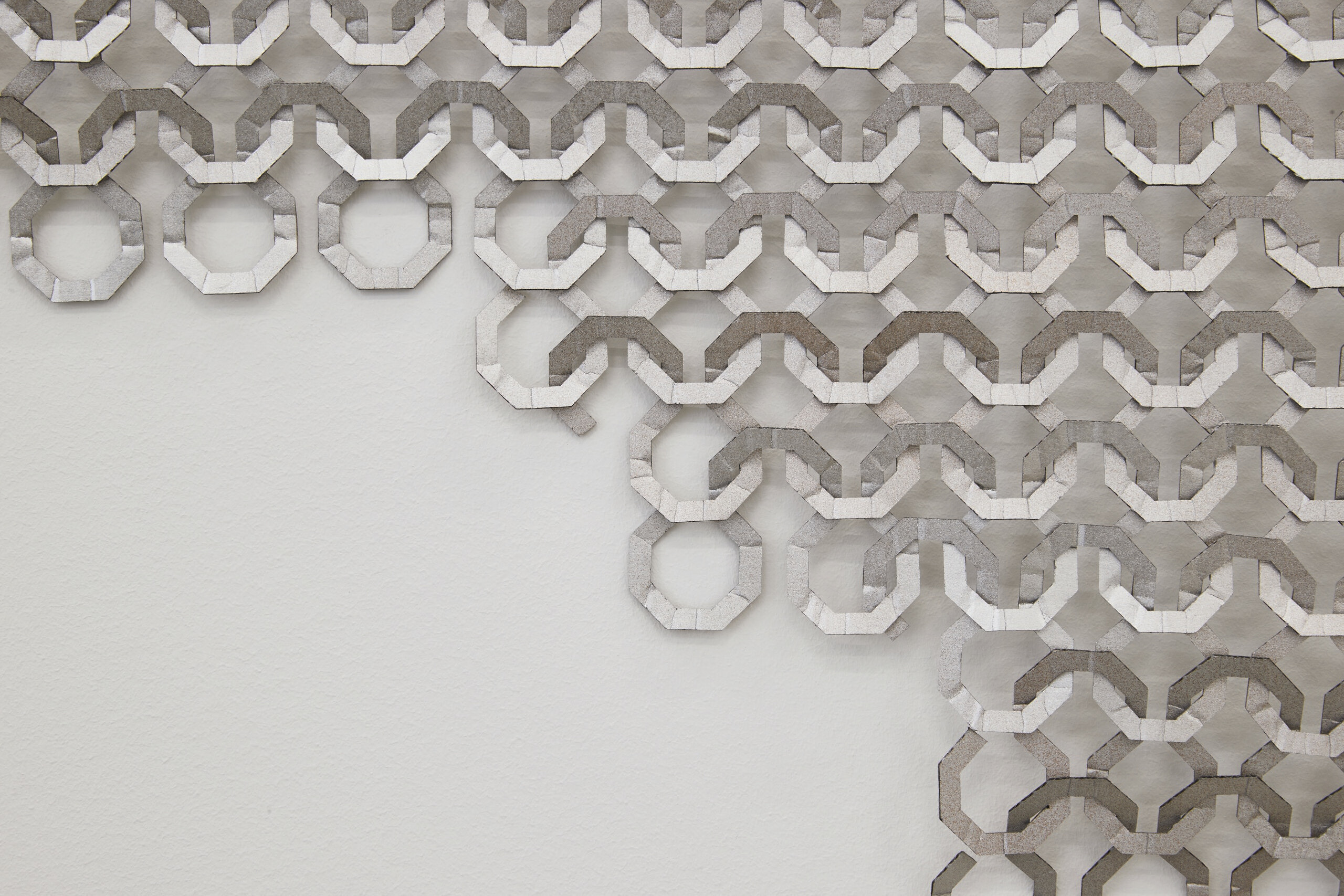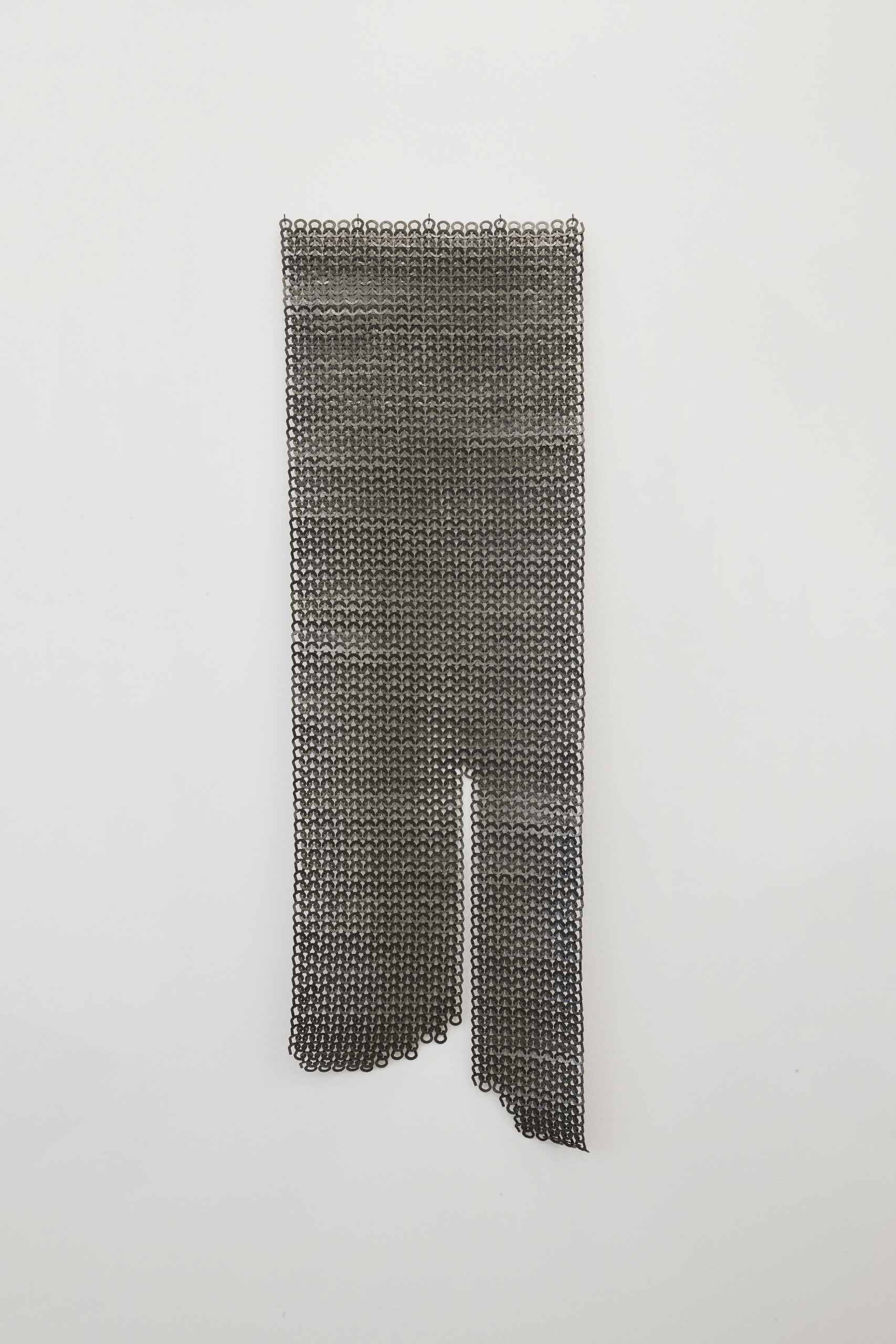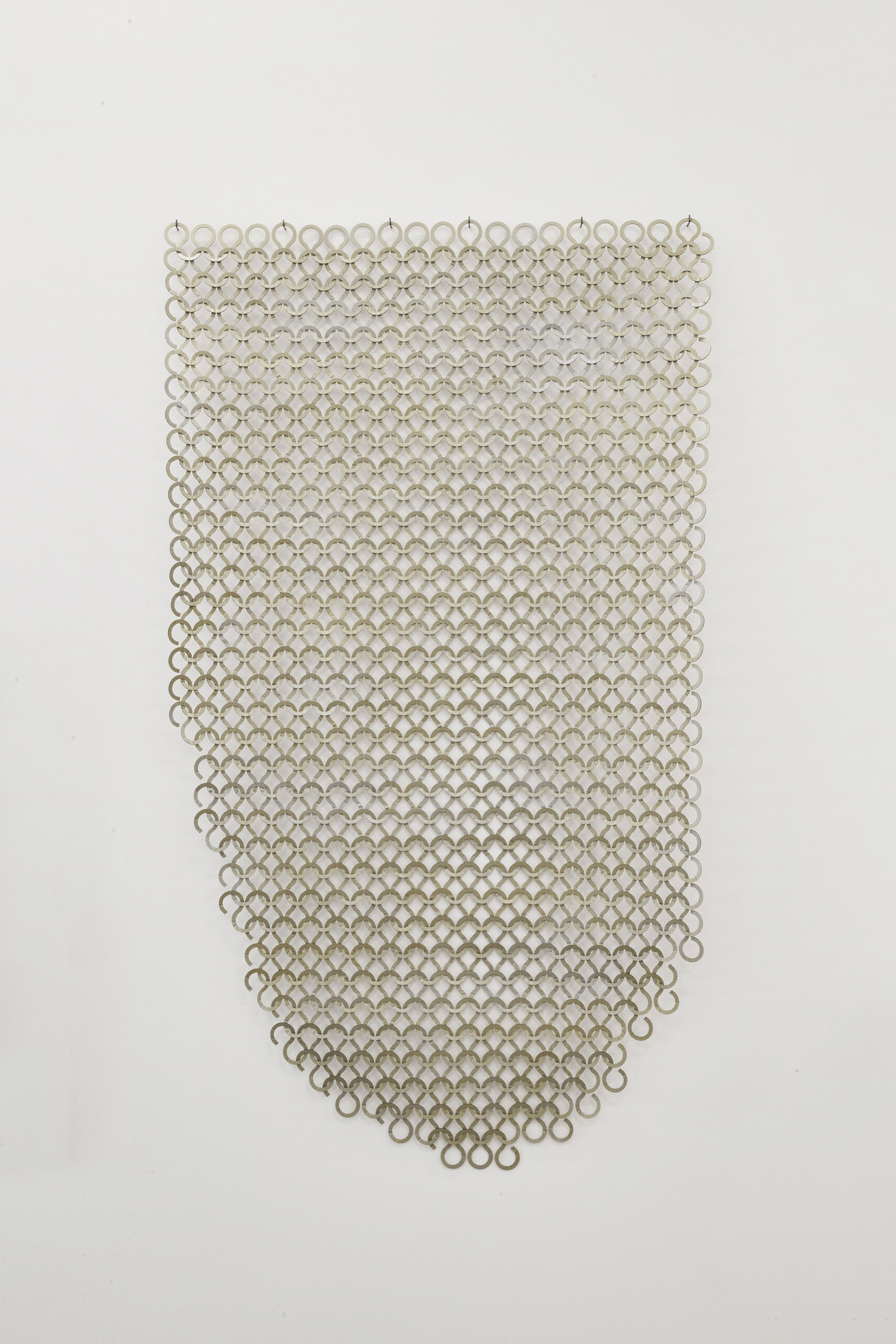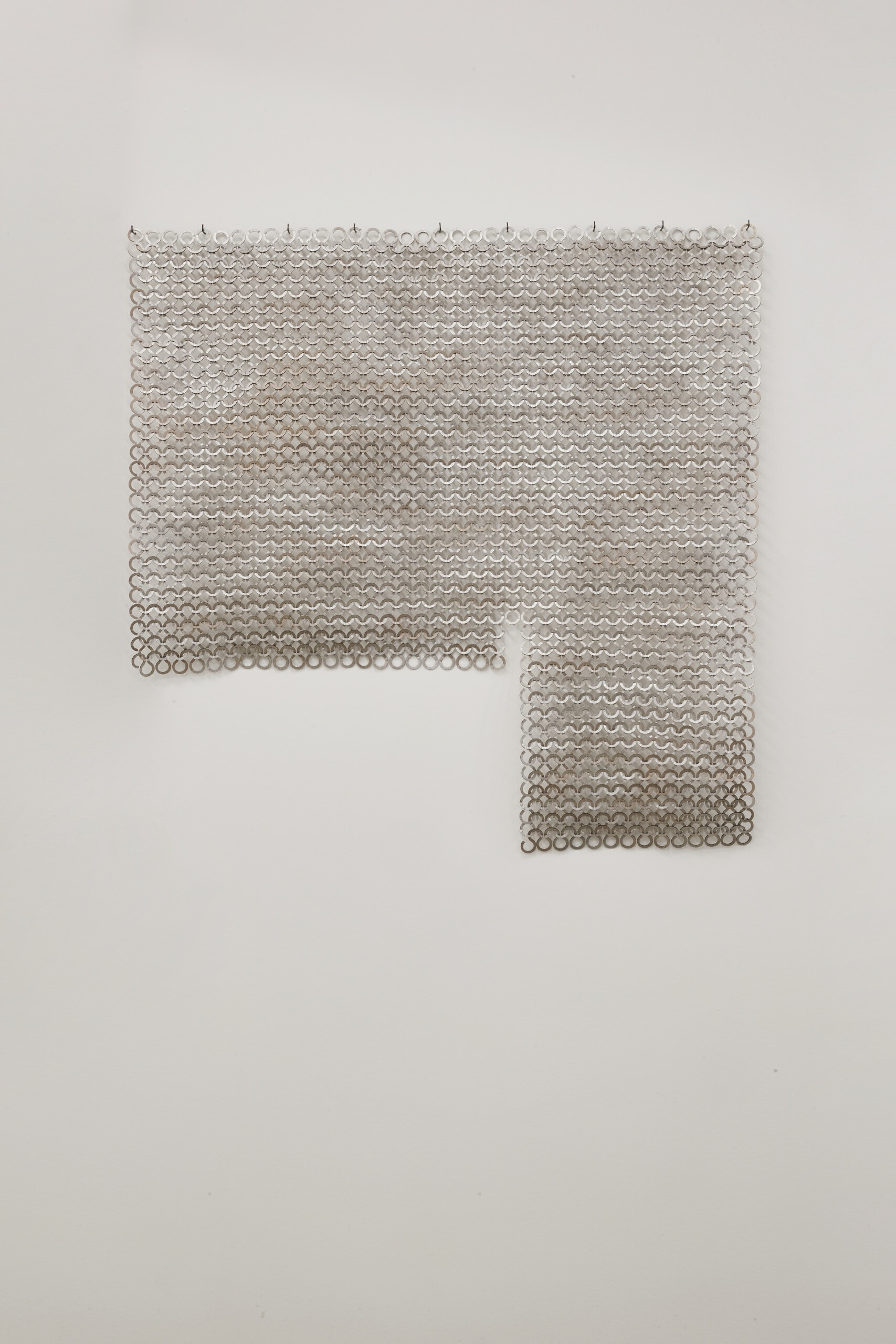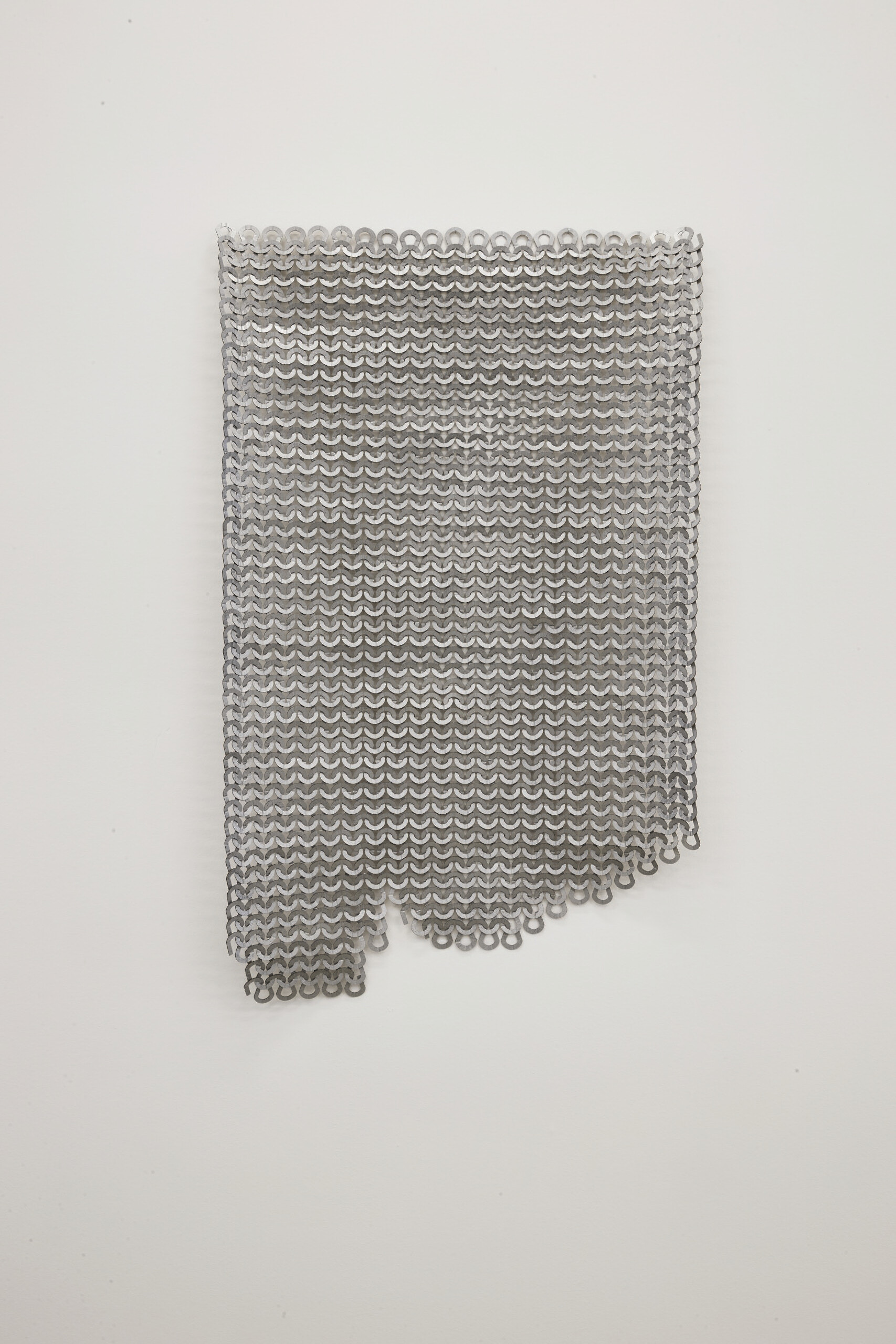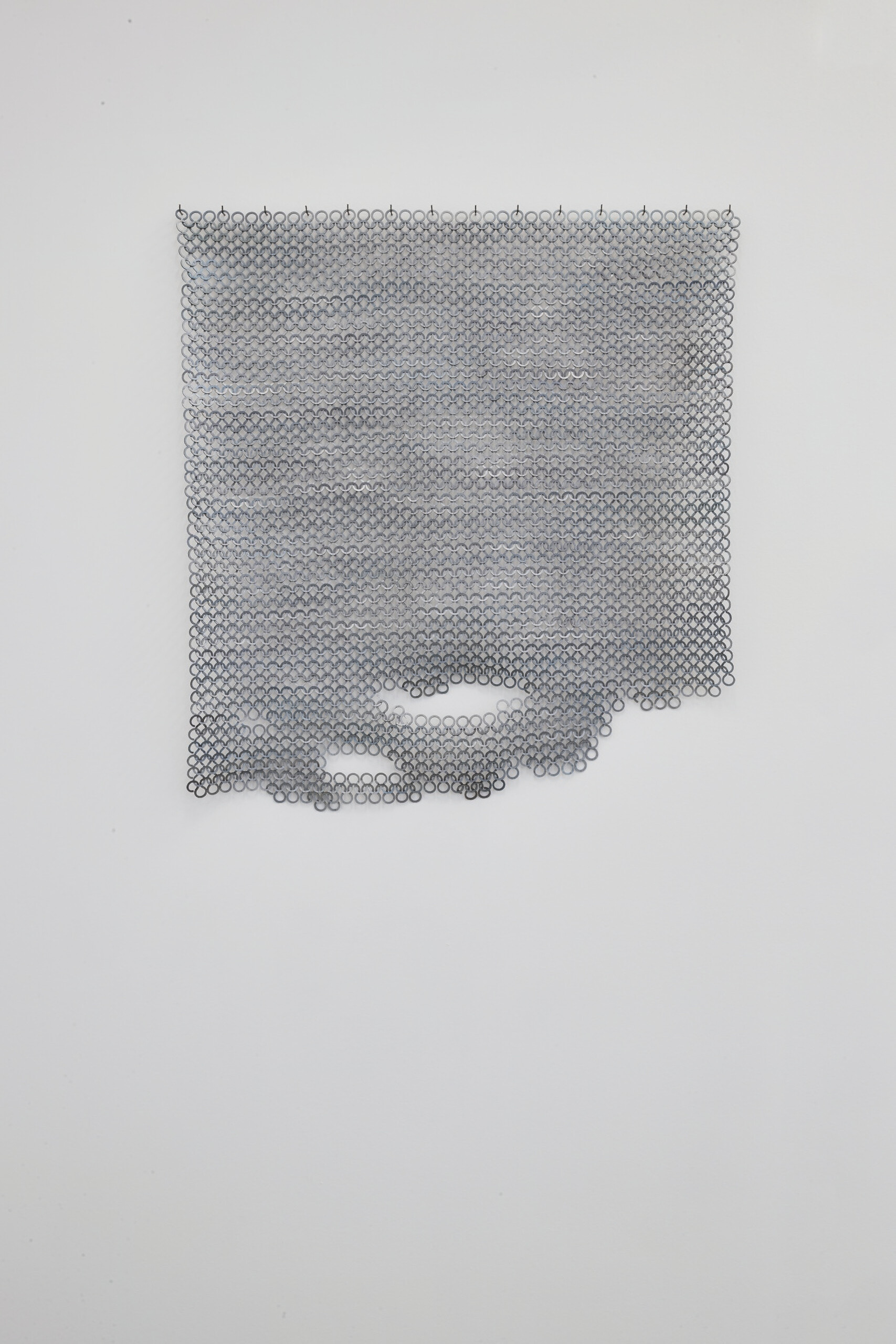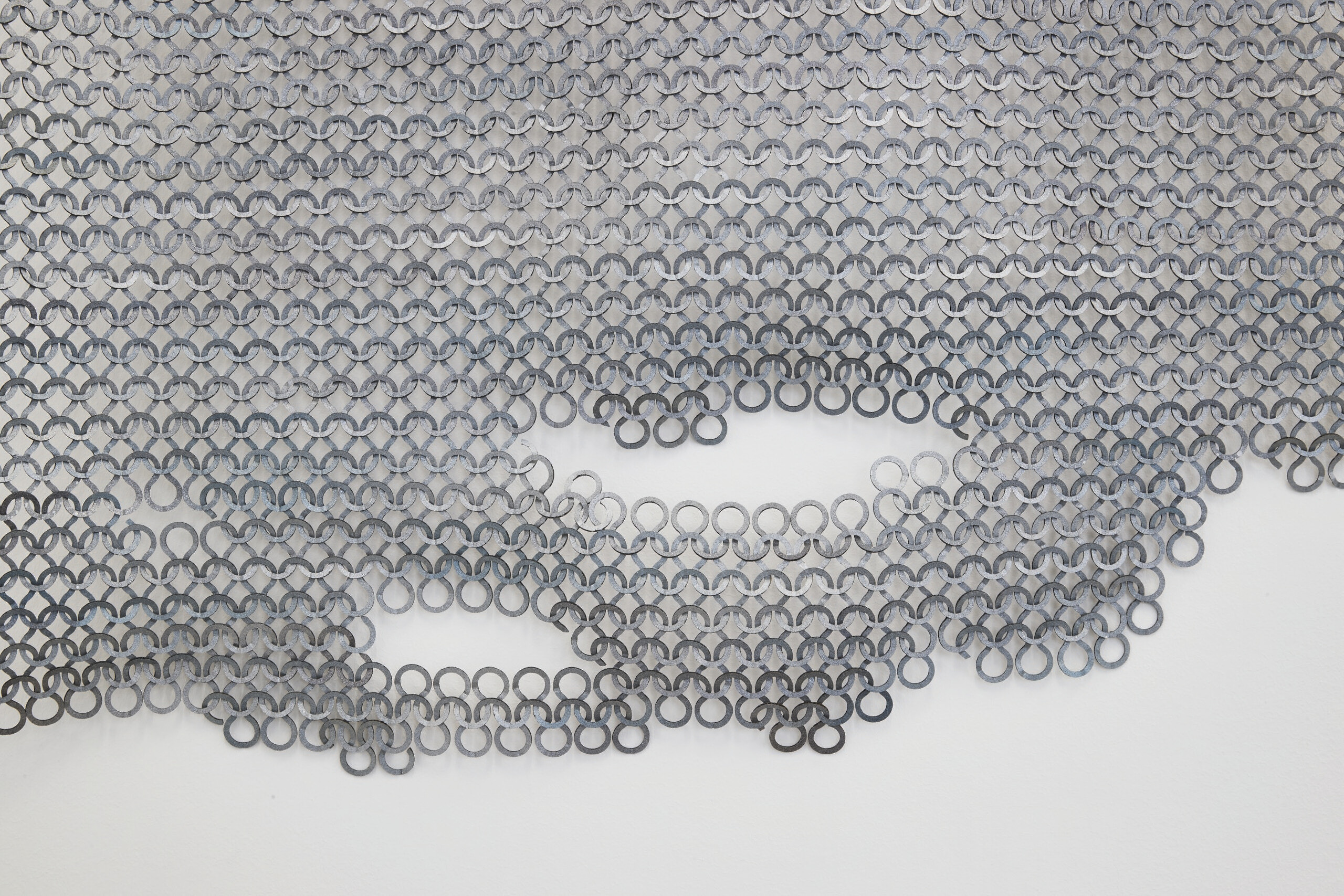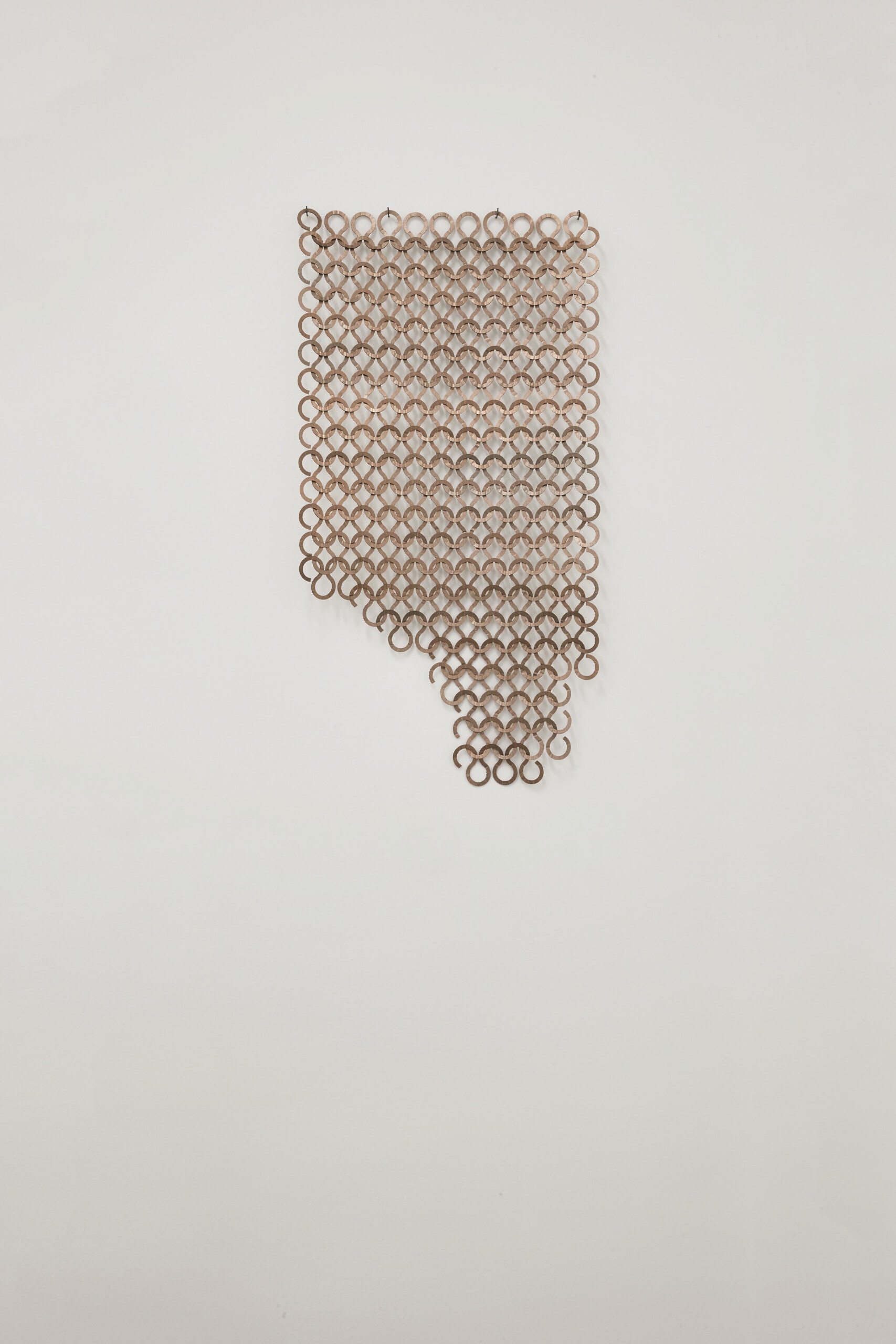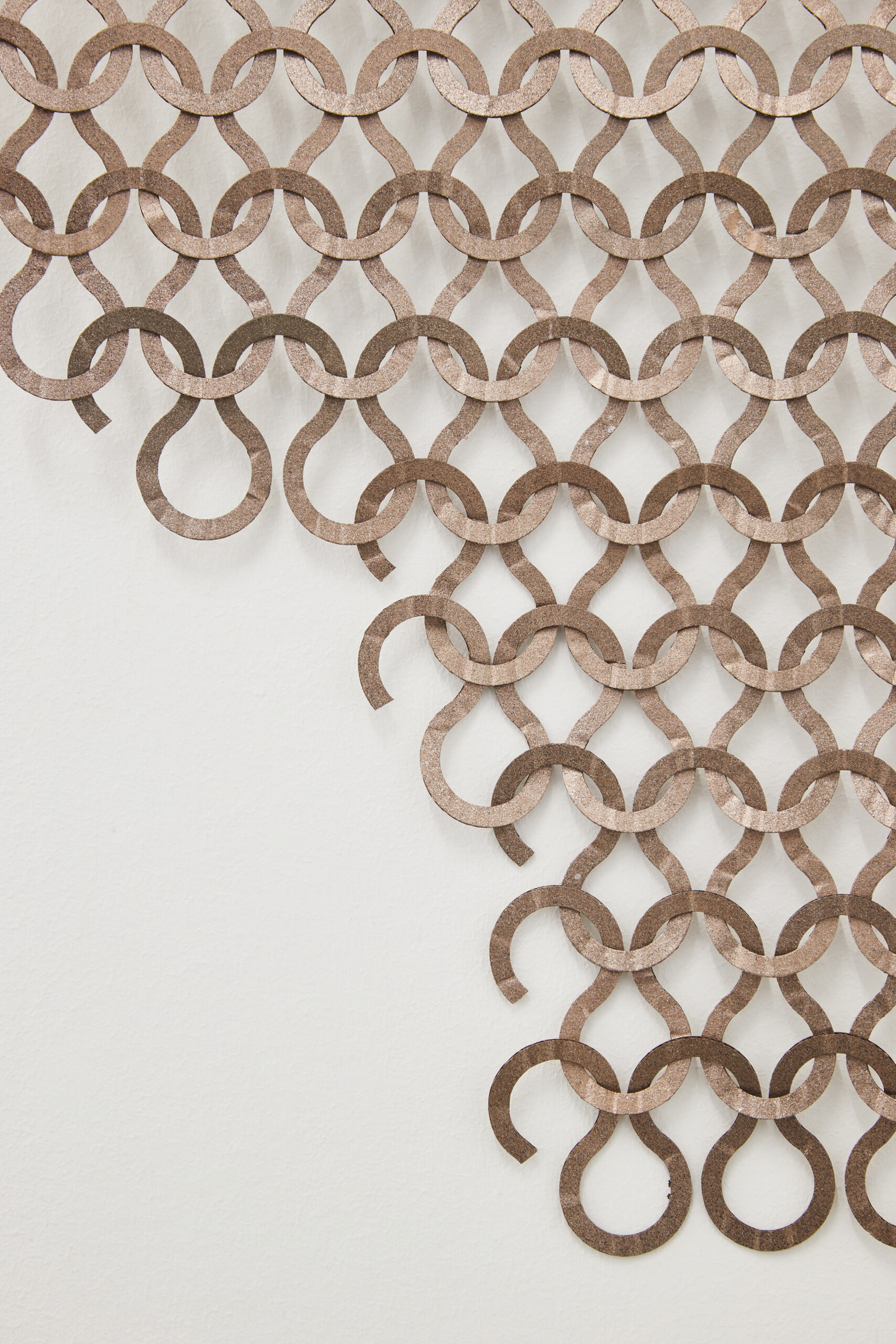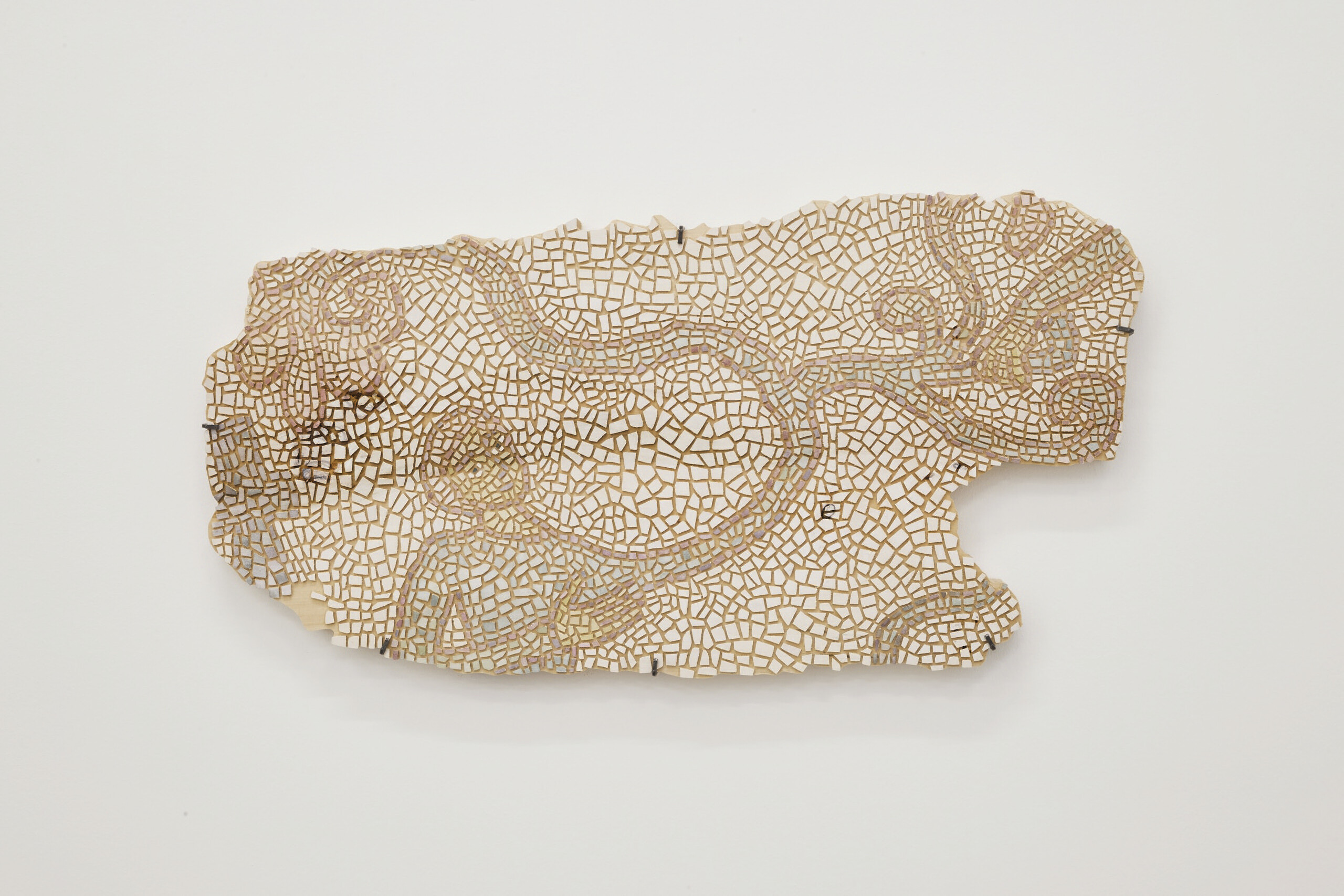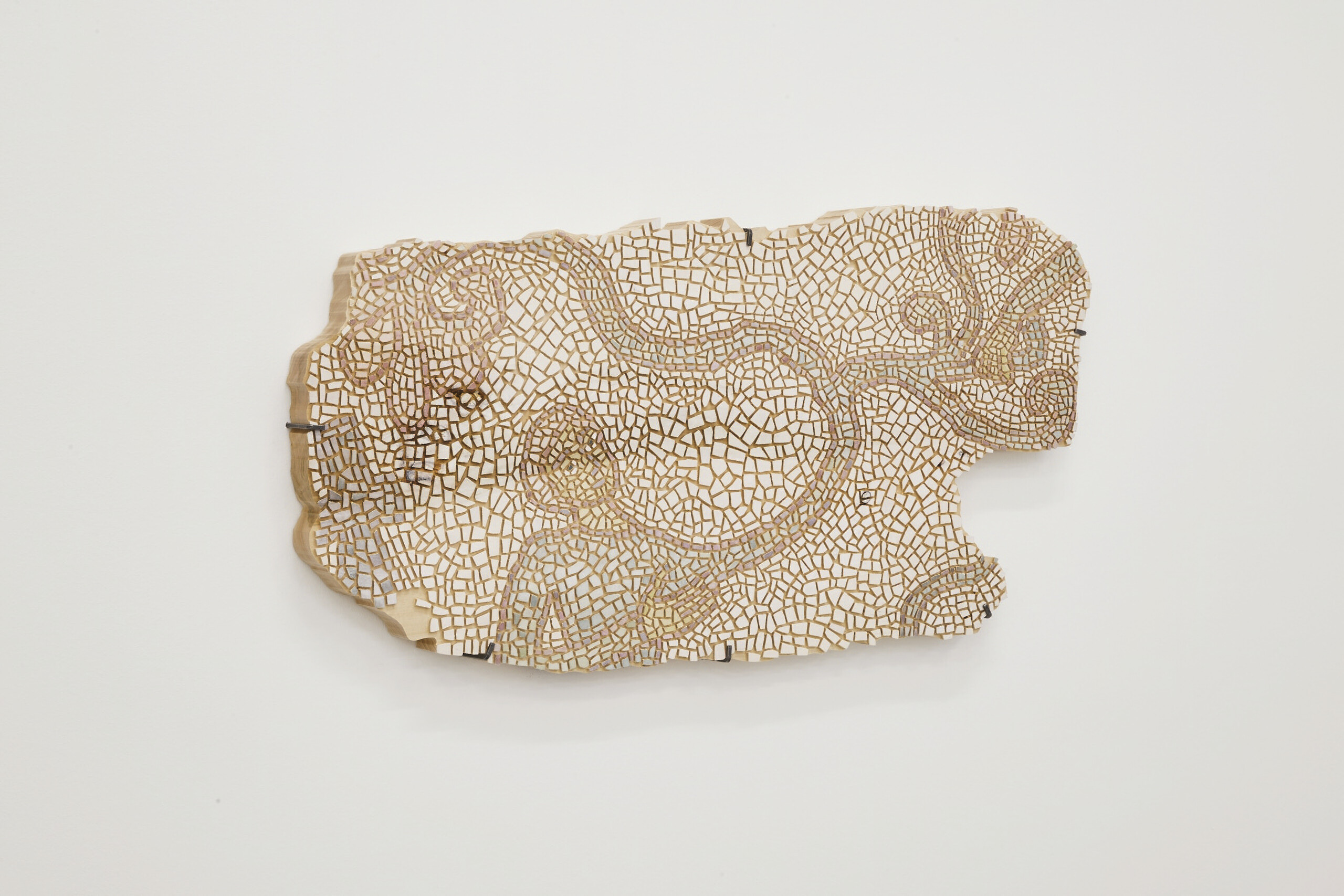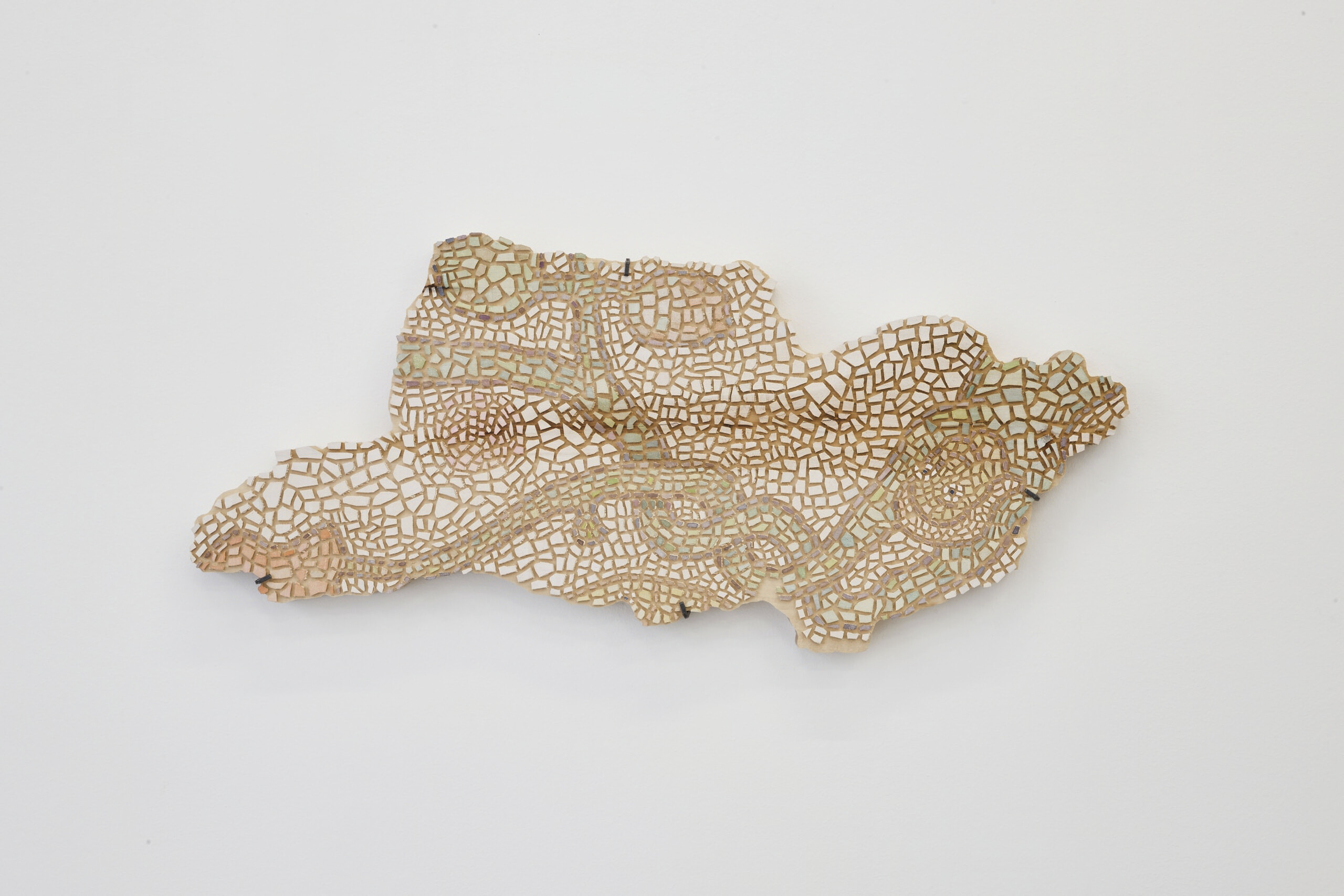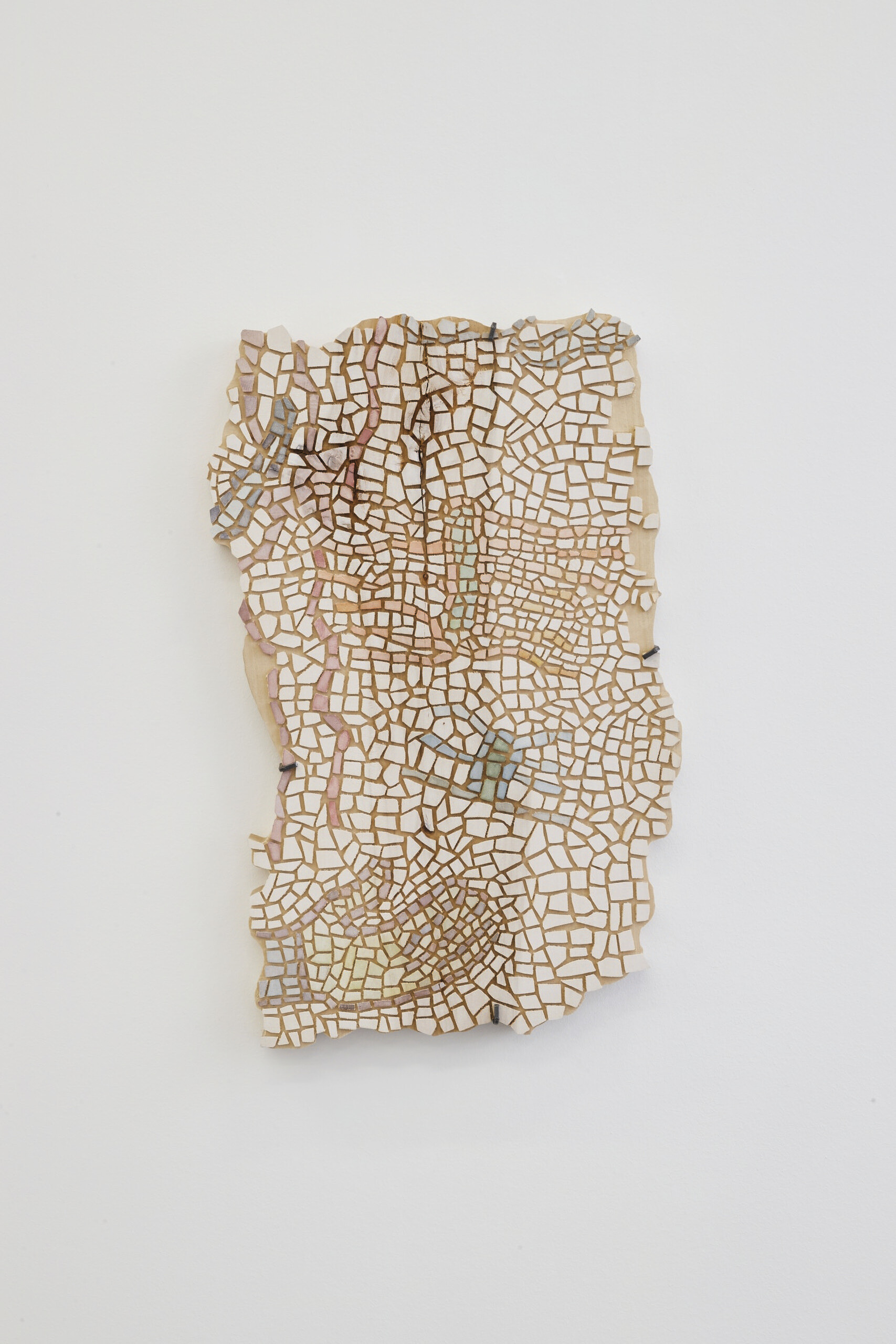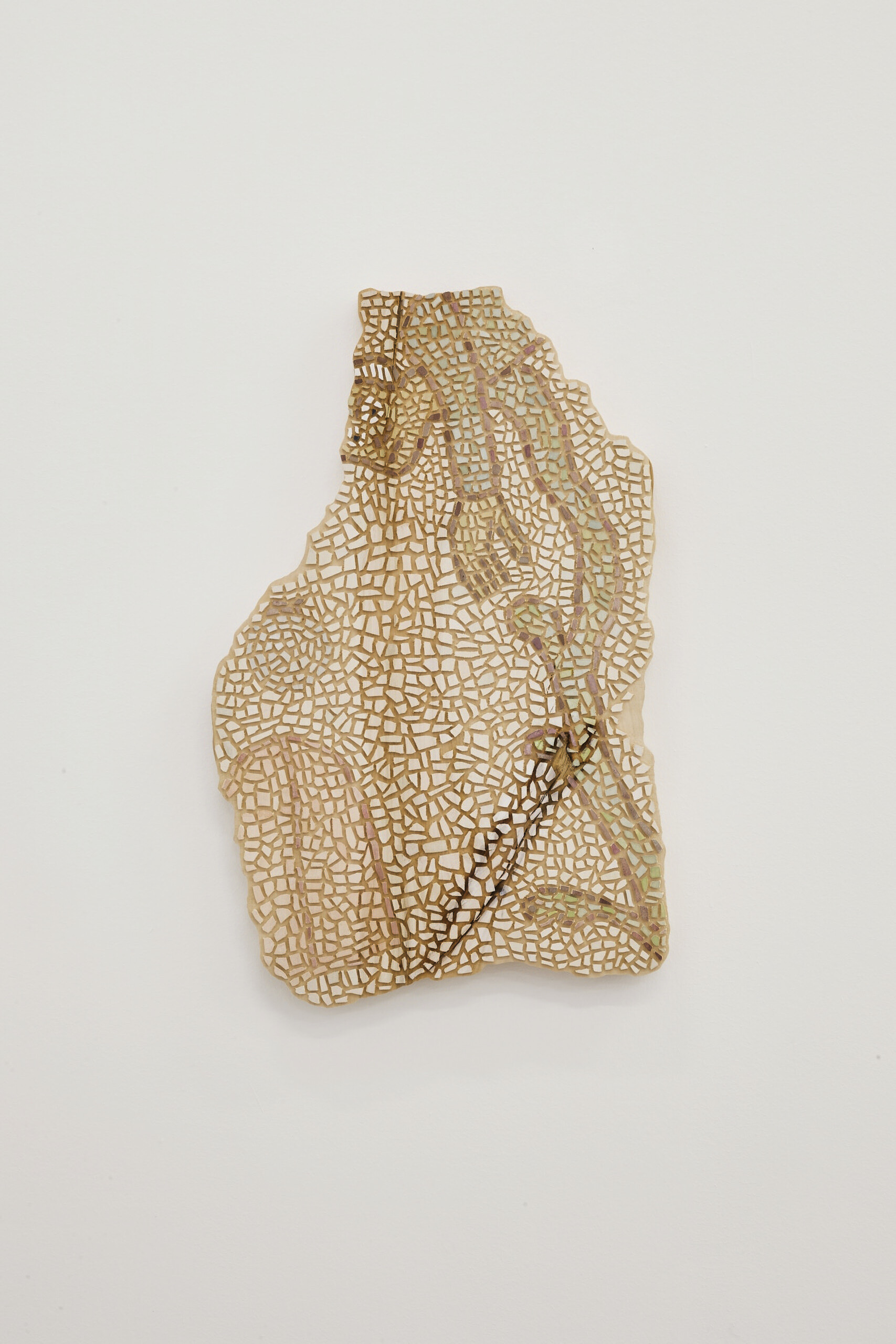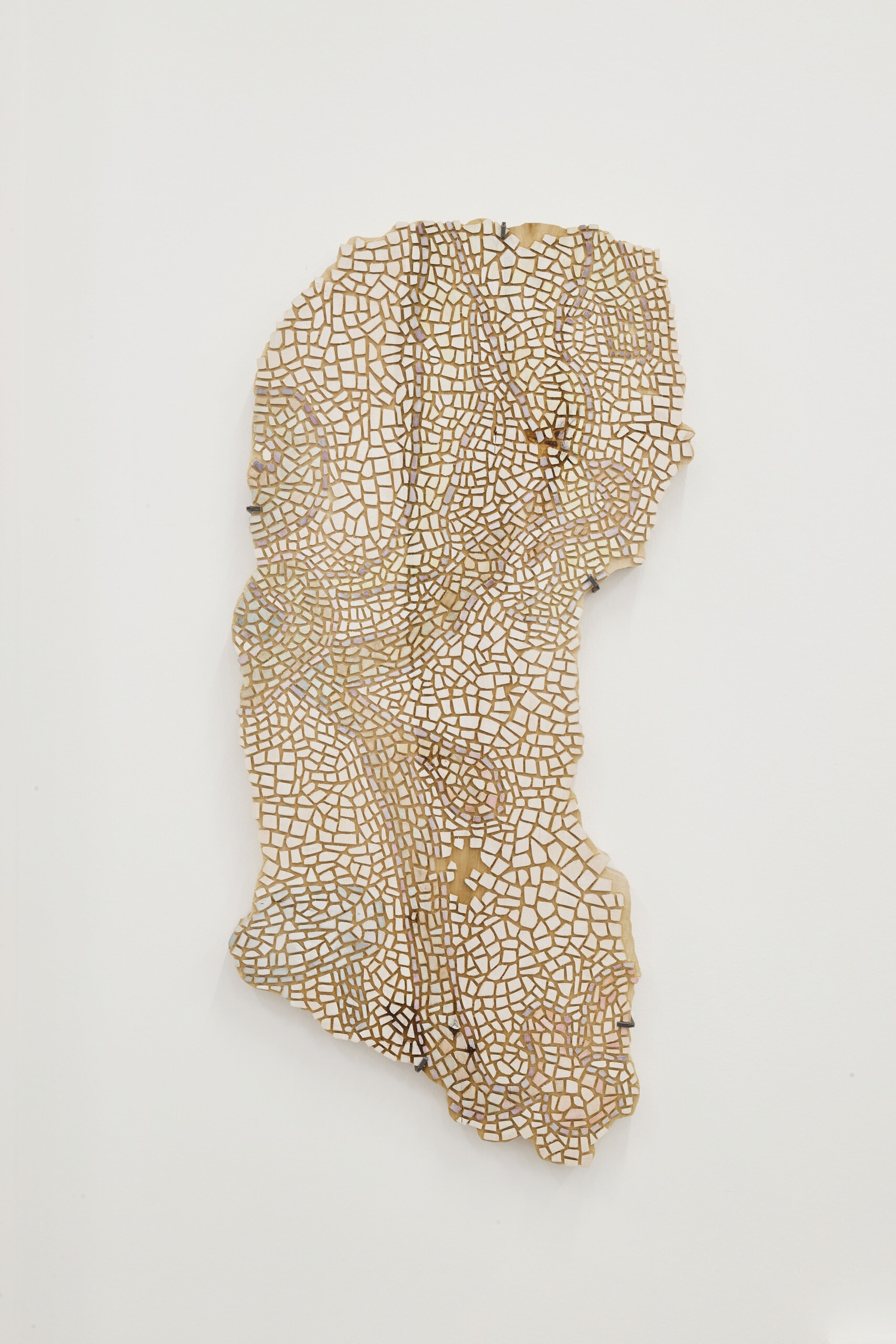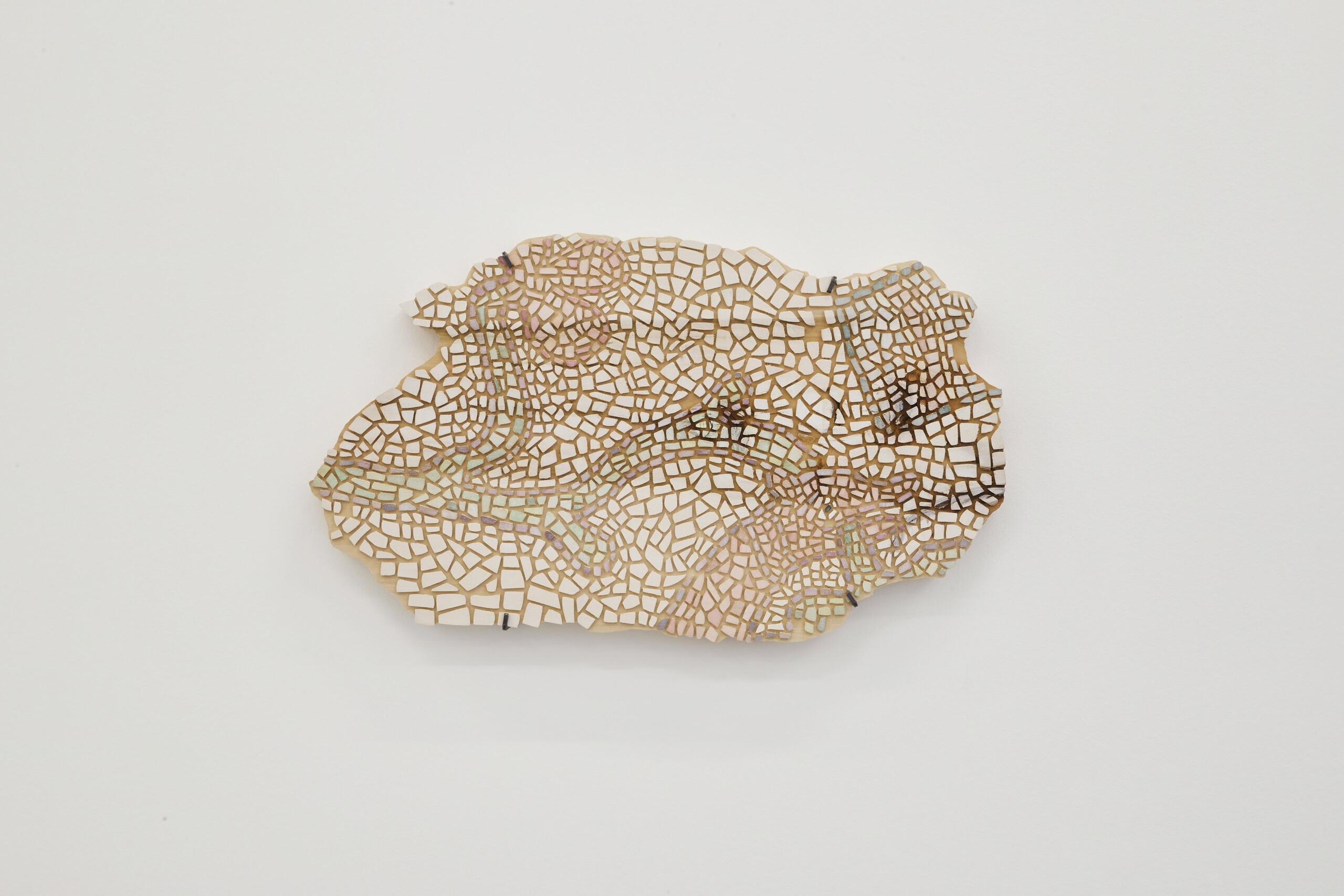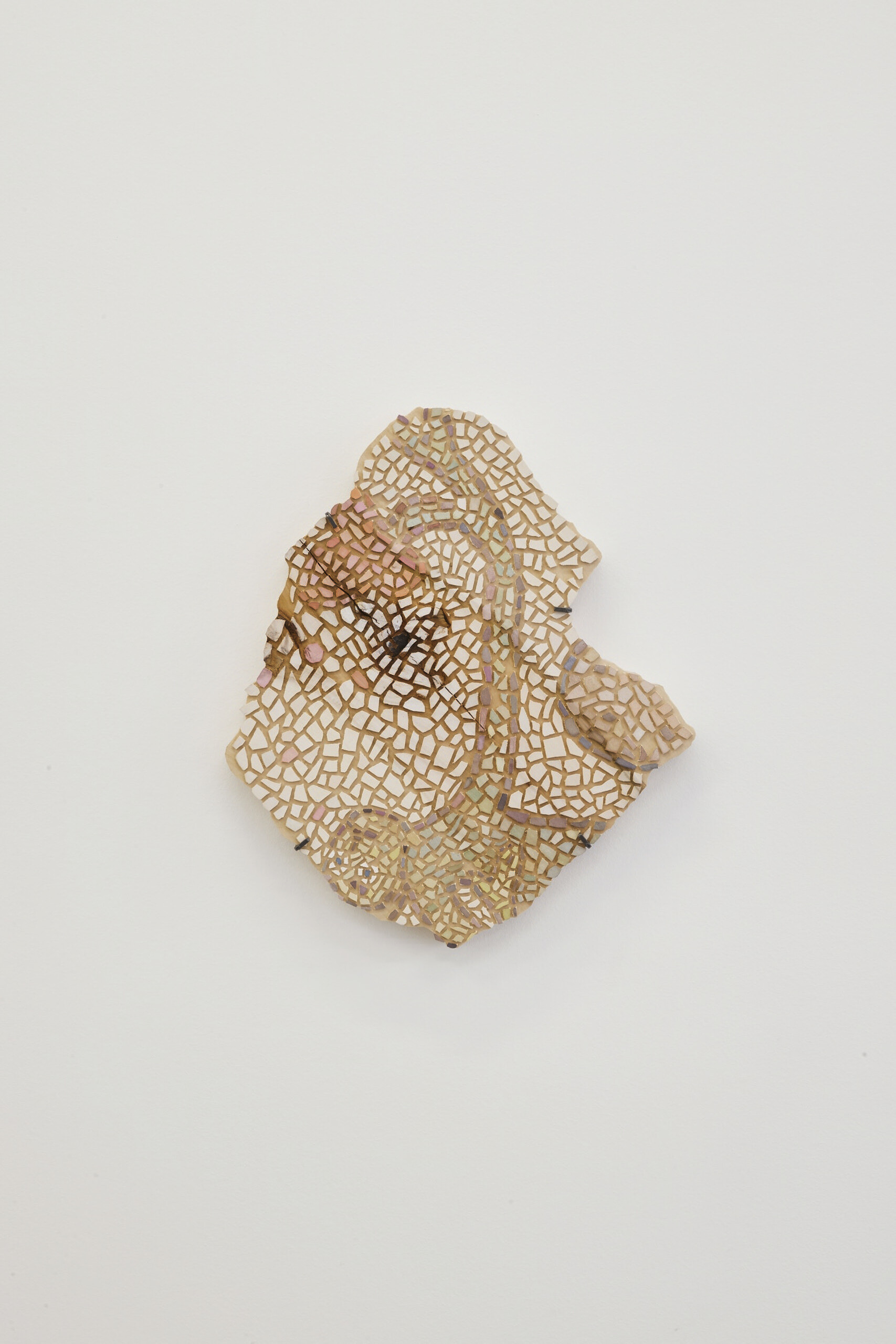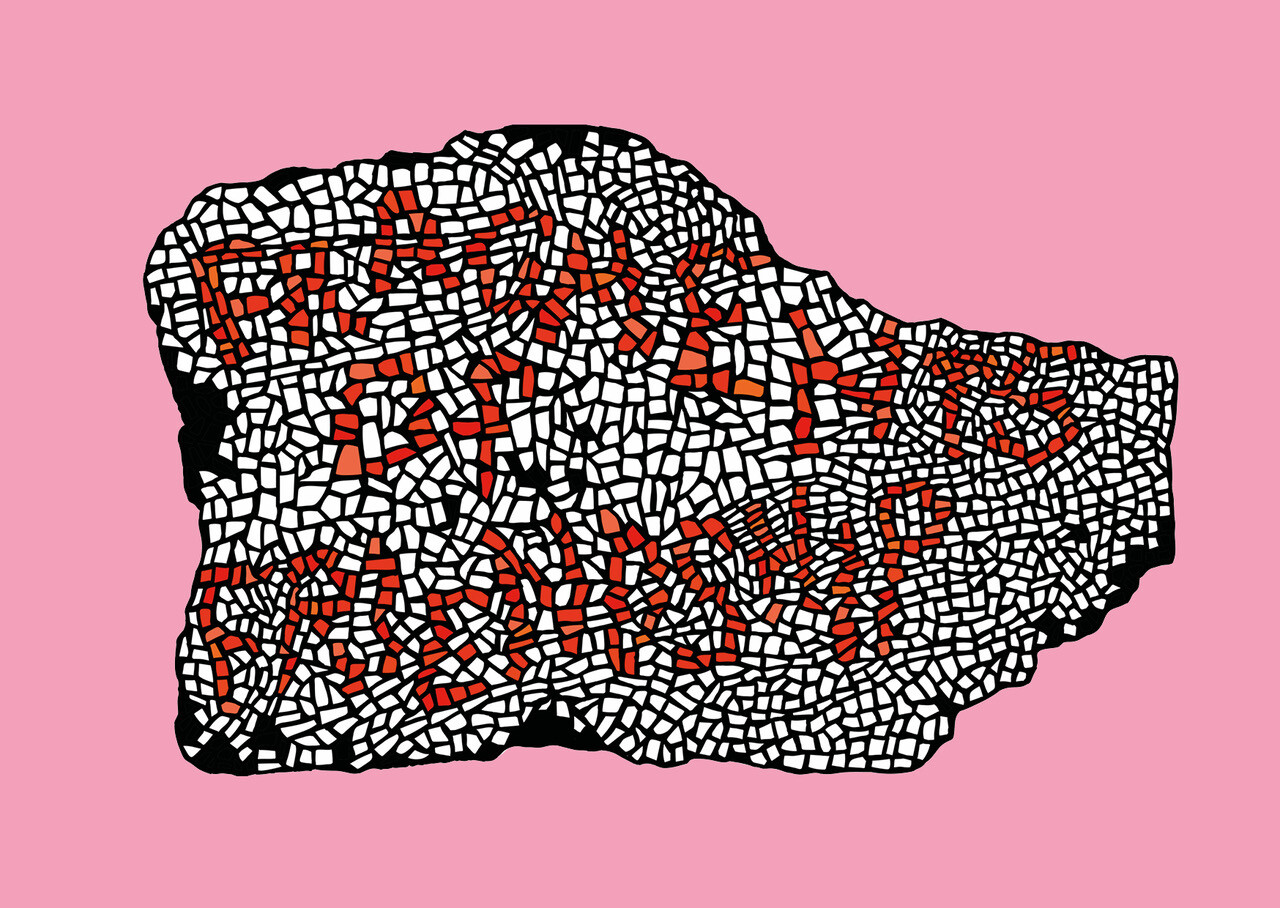Gerrit Frohne-Brinkmann and Emanuel Mauthe’s recent collaboration addresses questions of friendship, incorporating the aesthetics of medieval mosaics and chain mails. Through the imitation of historical craftsmanship, romanticised ideas of social cohesion are brought together through design and production media from the realms of hobby and leisure .
At first glance, the series Fragments of Friendship, is reminiscent of remnants taken from mosaic floors – extensive concatenations of minuscule multicoloured stones and glass pieces. However, upon closer inspection, the works reveal themselves to be imitations, made from solid lime wood. The total impression contradicts the materials and techniques used. The mosaics on view are not made from countless parts, but rather are technologically sophisticated, carved out of a single piece of wood using CNC milling and subsequently coloured in a hobbyist manner.
As in earlier works, Frohne-Brinkmann and Mauthe question and review the parallels between deep social relationships and collaborative artistic production. Fragments of Friendship seems to be extracted from a context of broader imagination. The figurative fragments convey a narrative of simpler, easier time which friendship was depicted as something primordial. Against the backdrop of this nostalgic glorification of the past, the representative historical relicts call into question the existence of an idealised friendship by suggesting that it merely offers a mind-space where one is allowed to long for absolute freedom.
Just as current concepts of friendship need to re-define and assert themselves, so too has armour taken up a new presence in contemporary life. In the 12th and 13th century, chain mail was the most important body armour. Consisting of several thousand metal rings, joined together in a pattern to form a protective mesh, the fabrication of chainmail was extremely costly and labor-intensive, demanding great mechanical skills. Today, chain armour is used beyond military contexts, in sectors such as film productions, live action role playing or reenactments.
With this in mind, the view of the lacquered cardboard Chainmails invites the viewer to immerse themselves into a faraway fantasy world. Frohne-Brinkmann and Mauthe borrow from a process used in costume and prop design to manufacture chain armour for their purpose. By doing so, Frohne-Brinkmann and Mauthe showcase the enhancement and revaluation of materials and techniques, creating a tangible moment of the present. The interplay of historism and hobbyism create a place of longing, searching the past for recipes that enable the very existence in today’s world and the shaping of tomorrow.
